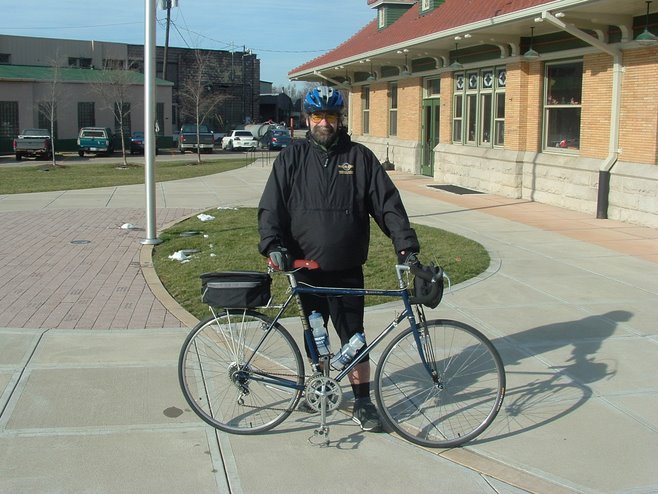Münster (SMS) Elsewhere people struggle their way through traffic congestion in their car. Most of the Münster citizens get their day off to a more comfortable start: 50 percent start their day by jumping onto their bicycles before making their way to school, university or their vocational training establishment. As many as 34.2 percent travel to work on the “Leeze”. In Münster, the higher education and service city with just under 280,000 inhabitants, the cycle density is so high that visitors to the city are sometimes unable to believe their eyes. In the past year, the proportion of cyclists of the amount of traffic as a whole has increased once more, reaching a 35 percent share. In comparison, the proportion of cars has not increased in more than 25 years. Münster is one of the cities with the lowest proportion of motor vehicles – it is a cycling city after all.
Getting there fast and easily
In the city, destinations are normally reached faster with the bicycle than with the car and that is not the only reason why both males and females, small and tall make regular use of their bicycles with a regular matter of course. Those who ride in the fresh air also do not have any problems finding a parking space, spare their nerves and cut costs. The city offers 12,500 parking spaces for cyclists. The authorities make it easy for the citizens to change to the environmentally friendly alternative. After all, the infrastructure for cycling traffic participants has not only been continuously refined since the North Rhine-Westphalian Ministry of Transport asked Münster to participate in the “Cycling friendly Cities and Municipalities” program in 1988.
Comfortable routes for the cyclists
275 kilometres of developed cycle-paths are just the beginning. They can not only be used when the sun is shining but the main routes are even cleared of snow and ice every day in winter. This is supplemented by a close network of agricultural roads and kilometre-long minor roads which are suitable for cycling. Münster was the first municipality in Germany to issue an official cycling city map, showing cyclists how to reach their destination fast and most comfortably without having to subject themselves to motor traffic. It was revised and reprinted in August 2007. Anyone can however get to where they are going with the assistance of more than 1750 destination signposts for cyclists which can be found throughout the city area and - devised from the planning brains of Münster – they have also found their way throughout Germany: This summer, the citizens of Münster celebrated the completion of the NRW-wide cycle-path signposting and the German-wide route network for cycling tourism.
Cyclists profit from numerous advantages in Münster: the Promenade, a 4.5 kilometre long green ring on which one can quickly cycle round the old part of the city without having to make many stops – this being what around 1350 Leezen riders do during the rush hour between 4 and 5 p.m. One-way streets which can be used by cyclists in the opposite direction to the stipulated one and cul-de-sacs which are only valid for cars, open up attractive secret paths. Münster also has cycling roads which explicitly prioritise cycling traffic when compared to motor traffic and combined bus/cycle lanes. Pedestrian precincts are also not necessarily prohibited for cyclists.
Safety has priority
The safety of the numerous cyclists has always been of great importance when planning traffic in Münster. For example, at numerous traffic lights, the traffic lights for cyclists turn to green a few seconds before the car drivers are allowed to go, so that they are not accidentally taken for a ride on the bonnet of a car turning right. Large crossings are provided with an extra waiting space at the front. This means that they always start first when the lights change to green and are always in view of the drivers of the cars behind. Traffic education in Münster already starts in kindergarten and primary school. In addition, the municipal authority has founded a "partnership for accident prevention" in cooperation with the police and numerous renowned institutions in Münster. True to the motto “Safe Through Münster”, they co-operate in order to reduce the number of accidents by ten percent each year.
In Germany’s second largest city territory, the bicycle not only makes a name for itself on short routes. The Leeze is also an important means of transport on longer distances in an environmental association with busses and rail transport. 2000-3000 commuters who commute both to and from Münster every day use the cycling station in front of the railway station, this being Germany’s largest bicycle garage with 3300 covered parking spaces and a comfortable bicycle service. The railway stations in the suburbs also have transfer stations, some being equipped with locking bicycle boxes. Furthermore, numerous bus stops are equipped with covered bicycle parking spaces and enable a trouble-free and fast transfer from cycle to bus and vice versa.
Specialists and interested laypersons can find large amounts of material from the municipal cycle traffic planners in the internet (www.muenster.de/stadt/stadtplanung). Among others, one can have the special aspects of cycling in Münster explained during a virtual cycling tour.



No comments:
Post a Comment